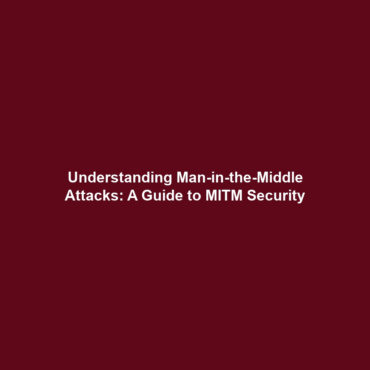The Process of Establishing a Secure Session Through Handshake in Cryptography
Introduction: In today’s digital era, securing communications is paramount. The process of establishing a secure session through a handshake, which includes public key exchange, session key creation, and encrypted communication, is a fundamental aspect of cryptography. This procedure not only ensures that unauthorized parties cannot access sensitive information but also protects data integrity and authenticity against malicious attacks. Understanding this process is crucial for cybersecurity experts and anyone interested in the domain of cryptography.
Key Concepts
This section elaborates on essential principles associated with establishing secure sessions through handshakes:
Public Key Exchange
Public key exchange allows two parties to share public keys securely, establishing a fundamental component of encrypted communication. It utilizes asymmetric cryptography, where each party has a pair of keys—public and private.
Session Key Creation
After exchanging public keys, the parties generate a unique session key. This symmetric key will be used for encrypting the data during the communication session, ensuring speed and efficiency in data exchanges.
Encrypted Communication
Once the session key is established, encrypted communication begins, safeguarding the data from eavesdroppers and ensuring that only the intended recipient can decrypt and read the messages.
Applications and Real-World Uses
The process of establishing a secure session through handshake has numerous applications across various industries:
- Online Banking: Secure transactions rely heavily on public key exchange and encrypted communication to protect user data.
- E-commerce: Websites implement this process to ensure safe transactions and protect customer information.
- VPNs: Virtual Private Networks use handshake processes to create secure tunnels for data transmission.
Understanding how these processes are used in cryptography reveals their importance in today’s information-driven society.
Current Challenges
Despite advancements in cryptography, several challenges persist:
- Performance Issues: The complexity of handshake protocols can affect communication speed.
- Vulnerability to Attacks: New types of attacks, such as man-in-the-middle, pose ongoing risks.
- Key Management: Efficiently managing public and private key pairs remains a significant task.
Addressing these challenges is vital for improving the implementation of secure sessions.
Future Research and Innovations
Innovations in cryptography are poised to overcome existing challenges:
- Post-Quantum Cryptography: New algorithms are being developed to protect against the potential threats posed by quantum computing.
- Improved Key Exchange Protocols: Research is focused on creating faster and more secure handshake mechanisms.
- Blockchain Technology: The integration of blockchain could enhance trust and security in public key exchange.
The future of secure communication appears promising with these advancements.
Conclusion
In conclusion, the process of establishing a secure session through a handshake involving public key exchange, session key creation, and encrypted communication is crucial within the realm of cryptography. As we continue to navigate a digital landscape fraught with threats, understanding these fundamental elements becomes increasingly important. For further reading on related topics, please explore our articles on encryption methods and cybersecurity practices.

